- April 26, 2018
- Posted by: Laura Milliard
- Category: Uncategorized
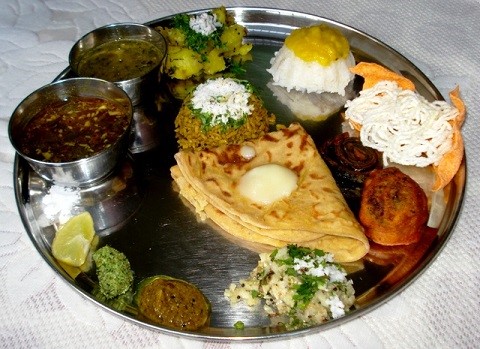
By Arundhati Joshi
Arundhati Joshi is an internationally trained dietitian with work experience from India and U.K. She is currently pursuing her dietetic registration in Canada. Her idea of diet counselling is to be critical of the food and not the person eating it! Nothing pleases her more than delving deeper beyond the apparent facet of food, ailments and words.
“It must be so boring to be a dietitian, to have to watch people’s food”.
“I disagree. Far from boring, it’s painful. It’s hard to convince people to see food as nourishment”.
“Then why do you do it?”
“How would it help if I quit? Food is the epicenter of all happiness, misery, greed, charity and the likes. It can be one’s best tool when under control and their biggest undoing if the control slips away. I am decoding the power of food with each day’s interactions with my clients.”
“You always have been a chatterbox, now eat your ‘seeds of power’.”
The last dig was at my choice of sprouts salad which I knew had set the sceptical tone of this conversation in the first place!
Growing up in India, I easily mingled with tastes from the various cultures and geographies of my country. My favorite dishes come from all parts of India that include puranpoli (a Maharashtrian sweet flatbread made of gram flour), Hyderabadi saalan biryani (Biryani with spicy curry), undhiyo (steamed vegetable mix from Gujrat) and rasgulla (cottage cheese dumplings from Bengal).
With all the rich variety in tastes and cultures, getting to know the science behind food was an insightful journey. We have a particular prayer that we say before meals which roughly translates to this-
Think of the almighty when eating food – Get in tune with your body
Concentrate on Him and your food would digest well – Concentrate on the act of eating
Food is the basis of life – Eating food is a sacred ritual
Eat not merely to stay alive but to worship the soul – Eat not only for the taste but for the nourishment you will gain from food
The ancient wisdom made a lot of sense with my newly acquired dietetics background and that was exactly what I set out to do – educate and help people understand and use the power of food.
My journey has taken me to various parts of India, UK and now Canada. Working at HFS as a dietetic intern has been exhilarating, not just because I am writing on their blog page, but mostly because of the sheer dedication I see here to make client food better. For the first time in my career, I came across pureed and texture modified foods that actually tasted real. During my stint in the UK, I was working with dementia clients at an LTC and the peculiar thing I noticed was that the clients would sometimes forget their names, their identities, and even their loved ones. But they would never forget how a ‘haggis’ or ‘black pudding’ should taste! There is a deep connection one has with the food they grew up on and, although it is impossible to please all palates, exploring the culinary methods would help food companies come up with authentic flavors.
I was asked to share my thoughts on what it would take to get ‘authentic’ Indian tastes and so here goes
1. Why is Indian food always a ‘curry’? Well it’s time to explore the dry dishes the cuisine has to offer such as whole lentils, dry vegetables, chutneys, savoury semolina, idli, dhokla, laddoos and more. The list is endless!
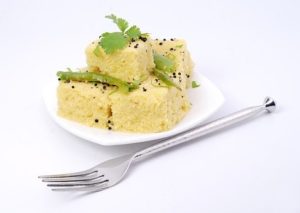
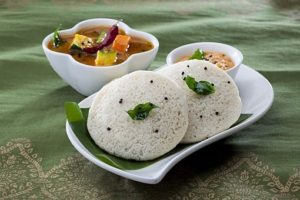 2.
2.
Dhokla Idli
2. Most packaged Indian food has the same base of onion or tomato base or sometimes both. In reality only a few specific dishes are made using that base.
3. The colour red or orange seems to be the unofficial trademark of Indian food. Truth couldn’t be further. For a land which actually celebrates the festival of color (Holi), it is impossible to keep vibrant and varied colors away from food.
4. The varieties of spices or ‘masala’ are innumerable. Every single family has their own traditional masala apart from those used in special cooking. Although we love masala, our daily dishes contain minimum spices and some of them are whole, not ground. Thus a daily dish of dal would contain no more than asafoetida, turmeric and salt and eaten with plain rice, ghee (clarified butter) and lemon.
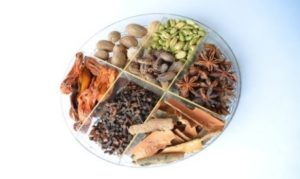
Indian spices
Some common masalas used in India are:
| Region | Masala name | Ingredients |
| West India | Goda masala | Coriander seeds, cumin, sesame seeds, dry coconut, black peppercorns, cloves, cinnamon and bay leaves |
| East India | Panch Phoran | Mix of 5 spices: white cumin, onion seeds, mustard seeds, fennel seeds & fenugreek seeds |
| North India | Garam masala | Coriander seeds, cumin seeds, cloves, cinnamon, star anise, green and black cardamom, black peppercorns, fenugreek seeds, bay leaves, carom seeds, nutmeg, nutmeg flowers, dry ginger |
| South India | Huli Pudi | Lentils, dry chillies, coriander seeds, cumin, asafoetida, turmeric, fenugreek seeds, mustard seeds, curry leaves, buds of Kapok tree |
5. Just as in everything else, the oil used for cooking varies by region too. People from western India prefer to use groundnut or sunflower oil, northern and eastern India prefers mustard oil, whereas south India favors coconut oil. The local availability and abundance has shaped most of India’s food culture. But there is one common thing for all, clarified butter or ghee is made at every household and holds an important position in the ingredient hierarchy. All dishes, savoury or sweet, are made extra special by using ghee for cooking or by serving it with the dish.
6. Tomato isn’t the only souring agent used in Indian cuisine. Depending on the nature, color and origin of the dish, different ingredients are used to give that tangy zest.
- Tamarind and tamarind leaves
- Kokum/ Garnicia indica
- Chaat masala
- Dried mango powder
- Raw mango
- Lemon
- Pomegranate seeds
- Buttermilk
- Toddy vinegar
- Green tomato
- Kachri
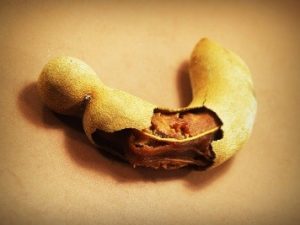
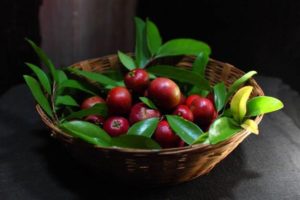
Tamarind Kokum (Garnicia indica)
7. Indian cuisine has a lot of thickening agents that exploit the natural thickening qualities of ingredients. Some of them are:
- Gram flour, lentil powder
- Sago, tapioca
- Pureed roasted onion
- Pureed chick peas or kidney beans
- Nut or seed pastes such as groundnut, cashew, coconut, almond, poppy seeds, sesame seeds
- Mustard seeds
- Vegetable pastes such as spinach, pumpkin, mustard leaves
- Mashed potato, sweet potato and yam
- Cream, khoya (fresh cheese), hung curd
All of this is just a glimpse of the variety of authentic Indian food. And we have just barely scratched the surface! If food companies would start using the methods and ingredients of real Indian cooking, I am sure they will be able to satisfy a lot of ‘authentic’ taste buds far away from India.
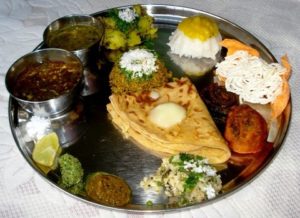
Western India typical meal
A typical Western India meal is laid out in a systematic fashion. The first item to be served is a pinch of salt right in the middle of a circular silver/steel plate or banana leaf. A triangle shaped piece of lemon with assortments of chutneys both dry and wet, and some salad (raita) is served on the left of the salt. This is the area which is demarcated for everything to be eaten in smaller quantities which mostly makes up for the minerals and essential fatty acids requirements. Then comes the dry sabji (dry vegetables) near the middle, on the right side of the salt, along with small bowls (katoris) of curry and dal also on the right. The curry is usually a green leafy vegetable while the dry vegetables are mostly roots & tubers or other vegetables such as peas, okra, yam or potato. The food items on the right side of the plate take care of the protein, vitamin & fiber content of the diet. Now is the time for carbohydrates. Both rice and whole wheat flat breads (chapati or roti) are served one after the other to provide the necessary carbohydrates and energy. The fact that the meal is a combination of several food sources used in a specific quantity makes it essentially balanced. The ideal combination of lemon and dal with rice or chapati improves protein digestion for this predominantly vegetarian meal. The presence of ‘left side’ items add colour, texture, taste and nourishment to the meals. All the meals are accompanied with plain water and buttermilk which is used as a probiotic digestive apart from being a thirst quencher.
This short description gives an idea of how Indians are used to eating a variety of food items at one go and are hardly satisfied with a meal made up of one or two food items. The satisfaction of having a little bit of everything and too much of nothing is the secret to recreating the Indian magic of an eventful mealtime!
